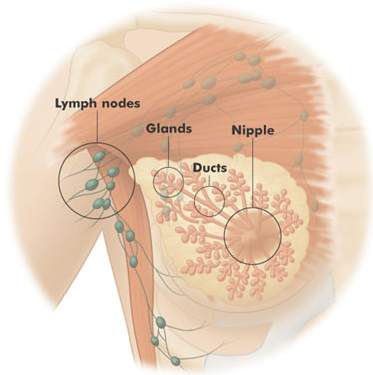The risk factors used to predict which
patients need (or benefit) from chemotherapy may be cahnging, with new studies
demonstrating that measuring the genetic mutations that are commonly found in breast
cancer cells will predict more accurately the benefits and need for chemotherapy...as
noted below:
That test was developed by Genomic Health, a
company in Redwood City, Calif. The test looks at the activity levels of 21 genes in tumor
samples. It categorizes the cancers as being of low, intermediate or high risk of
recurrence.
To validate the test, company scientists and academic
collaborators from the National Surgical Adjuvant Breast and Bowel Project used samples
from 668 women. Those women had taken part in a trial in the 1980's, so it was already
known whether their cancers had recurred.
Only 6.8 percent of the women rated by the test to be in
the low-risk group suffered a recurrence outside the breast within 10 years, compared with
14.3 percent in the intermediate group and 30.5 percent in the high-risk group.
Those results apply only to women who are taking a hormonal
drug called tamoxifen for newly diagnosed cancer that has not spread to the lymph nodes
and that is stimulated by estrogen. Still, there are estimated to be at least 50,000 new
cases a year that fit that category.
The data on risk, initially reported at the San Antonio
Breast Cancer Symposium a year ago, showed only whether the cancer was likely to recur,
not whether chemotherapy would help prevent a recurrence.
But new data presented in San Antonio yesterday, from a
different trial by the same authors, showed that the patients in the high-risk group had
benefited from chemotherapy while those in the lower-risk groups had not. In the high-risk
group, 40 percent of patients who got only tamoxifen had a recurrence of cancer within 10
years, compared with just 12 percent who got both tamoxifen and chemotherapy. But in the
low-risk group, both those who got chemotherapy and tamoxifen and those who got tamoxifen
alone had a recurrence rate of roughly 5 percent. |

